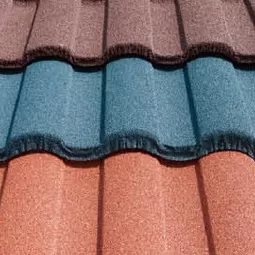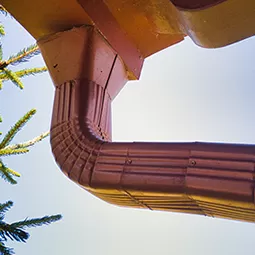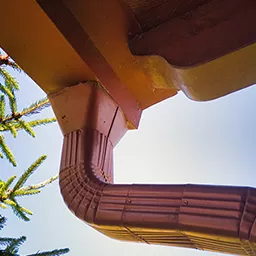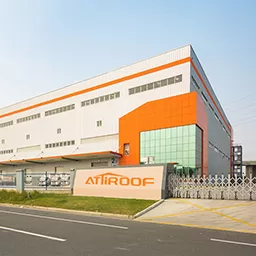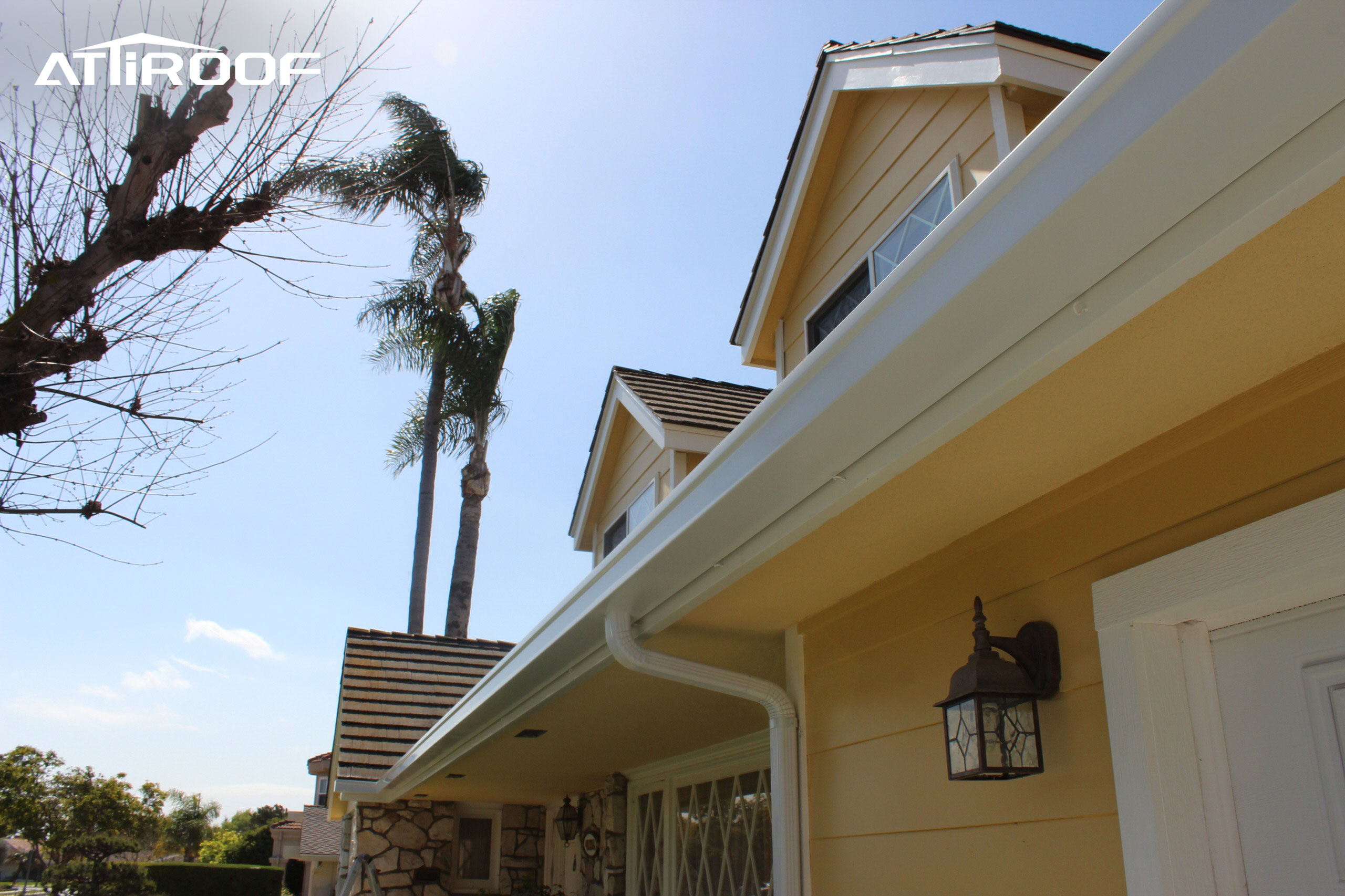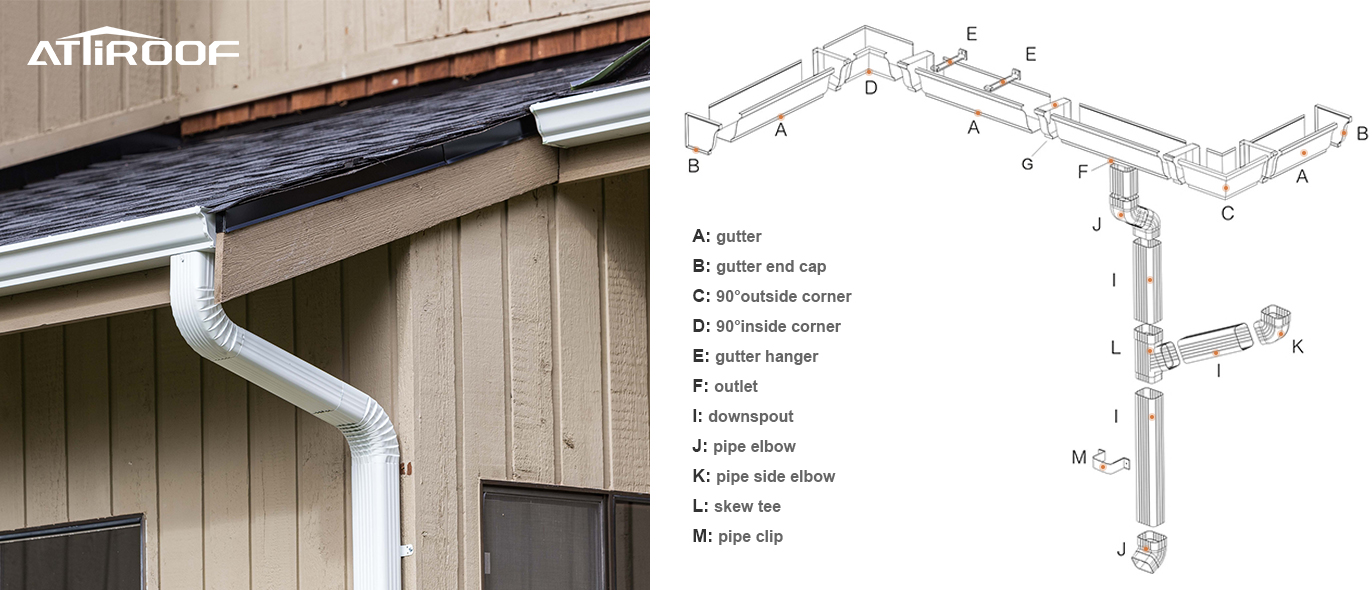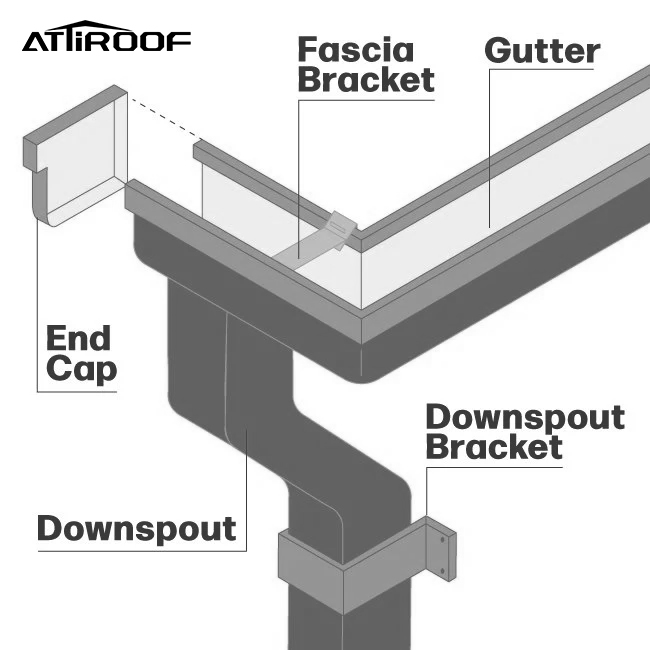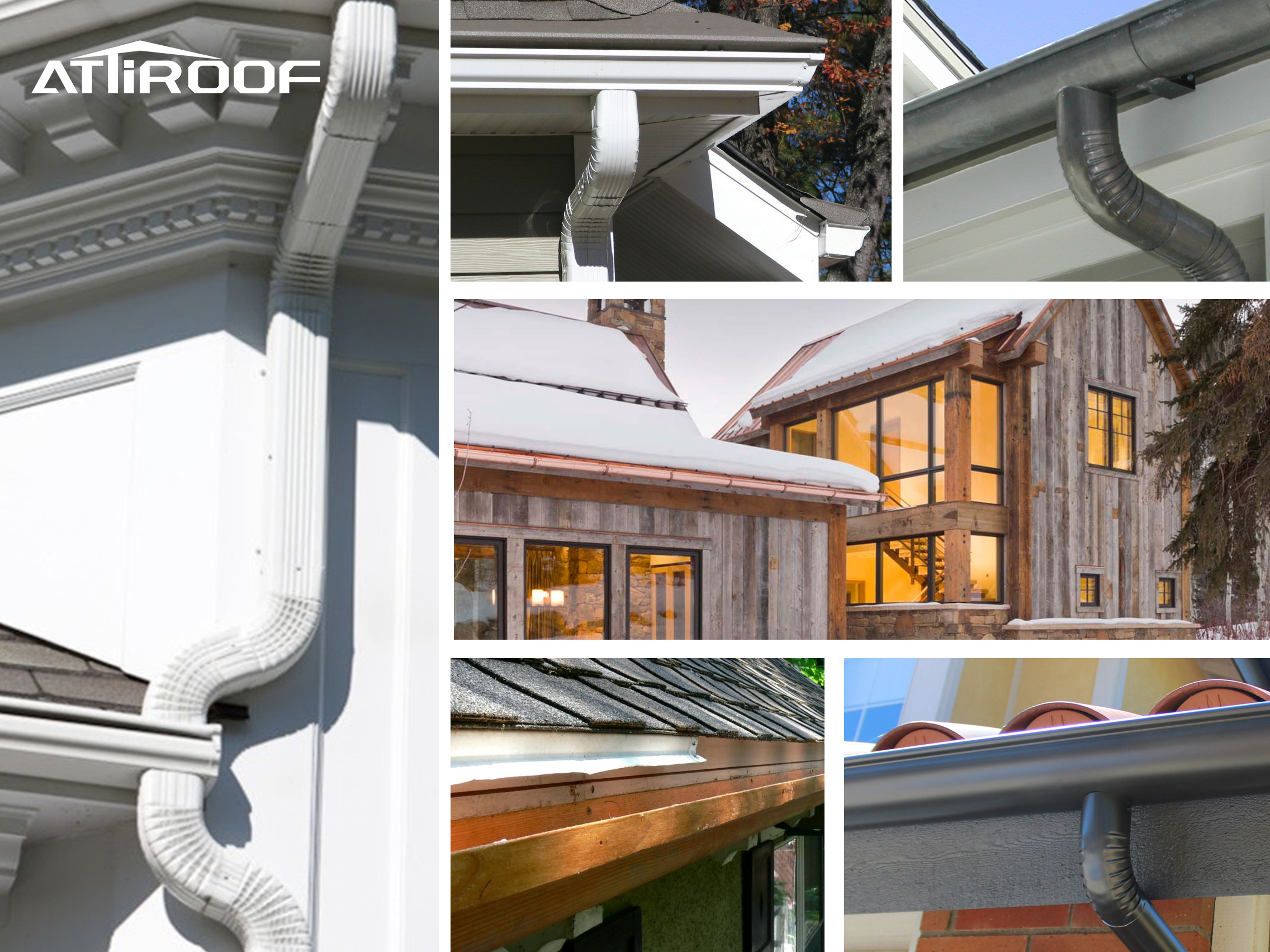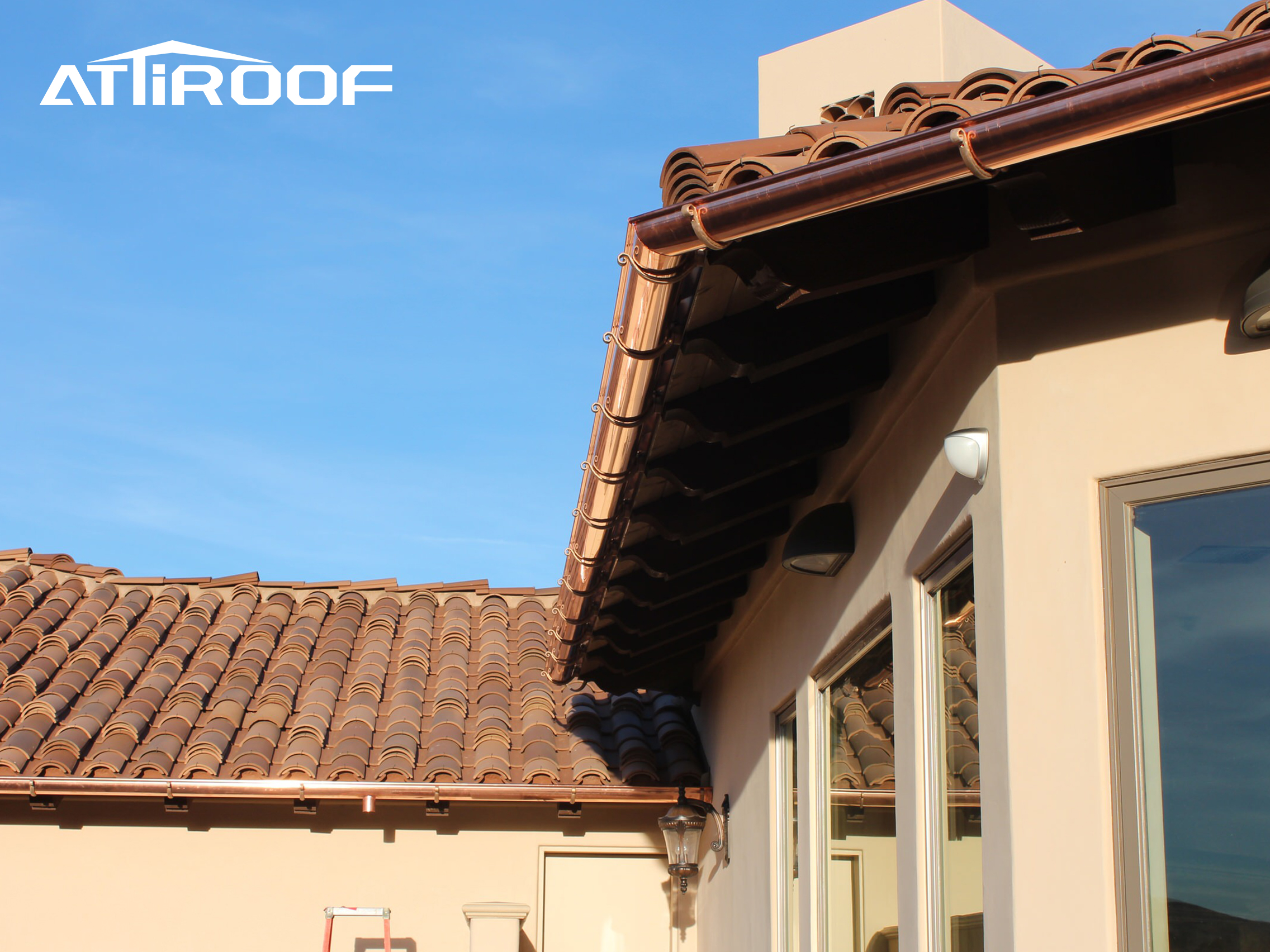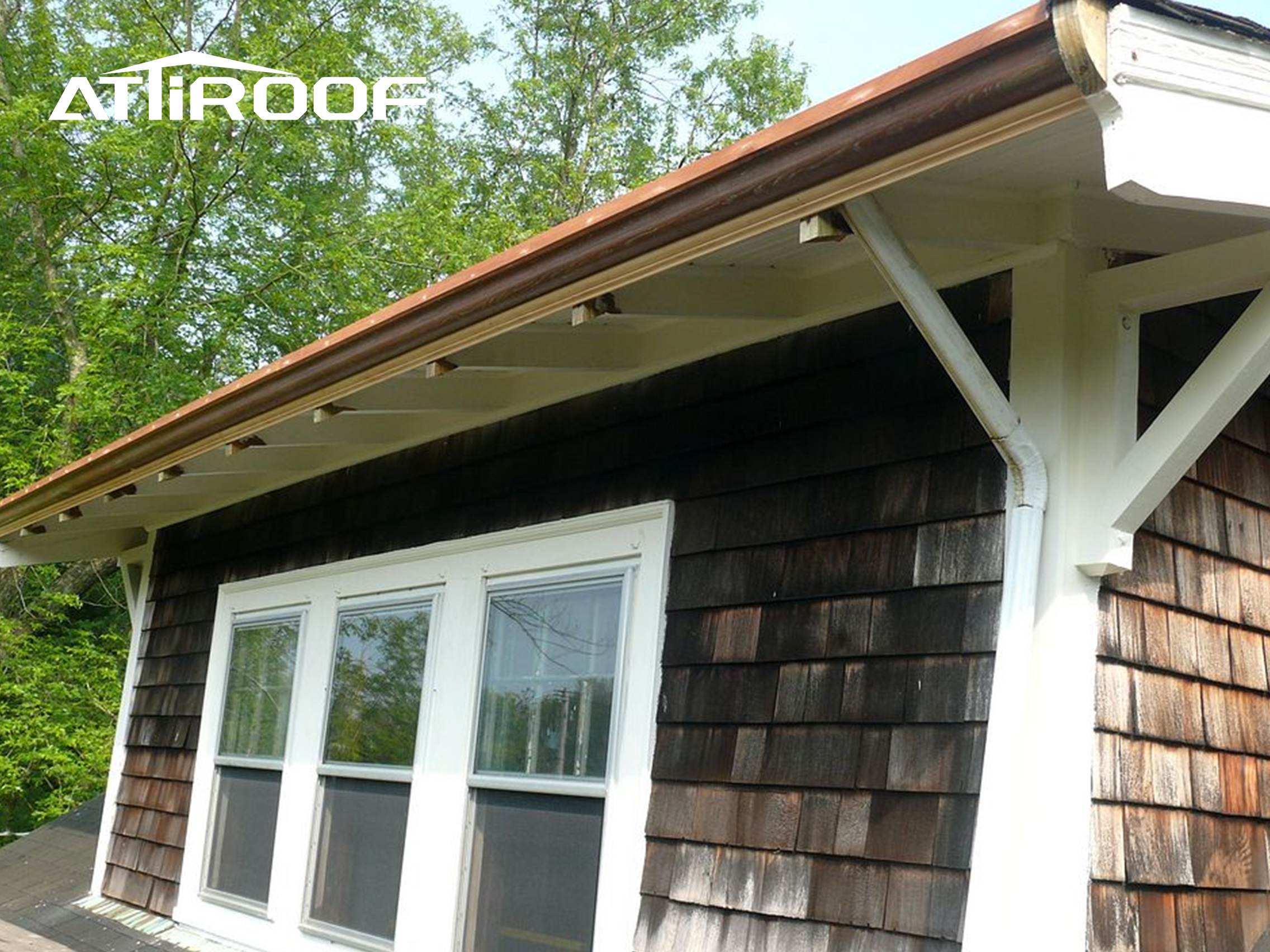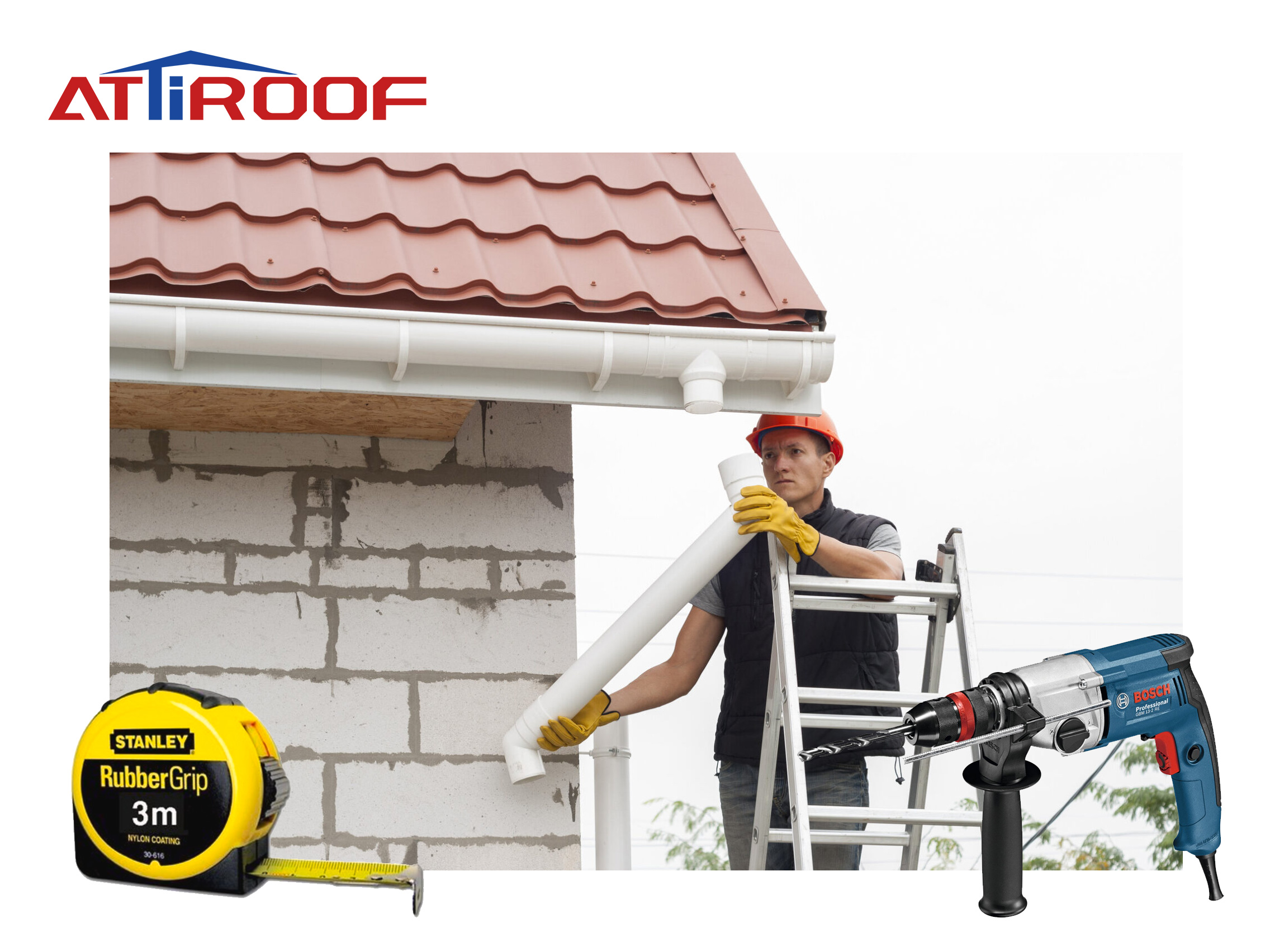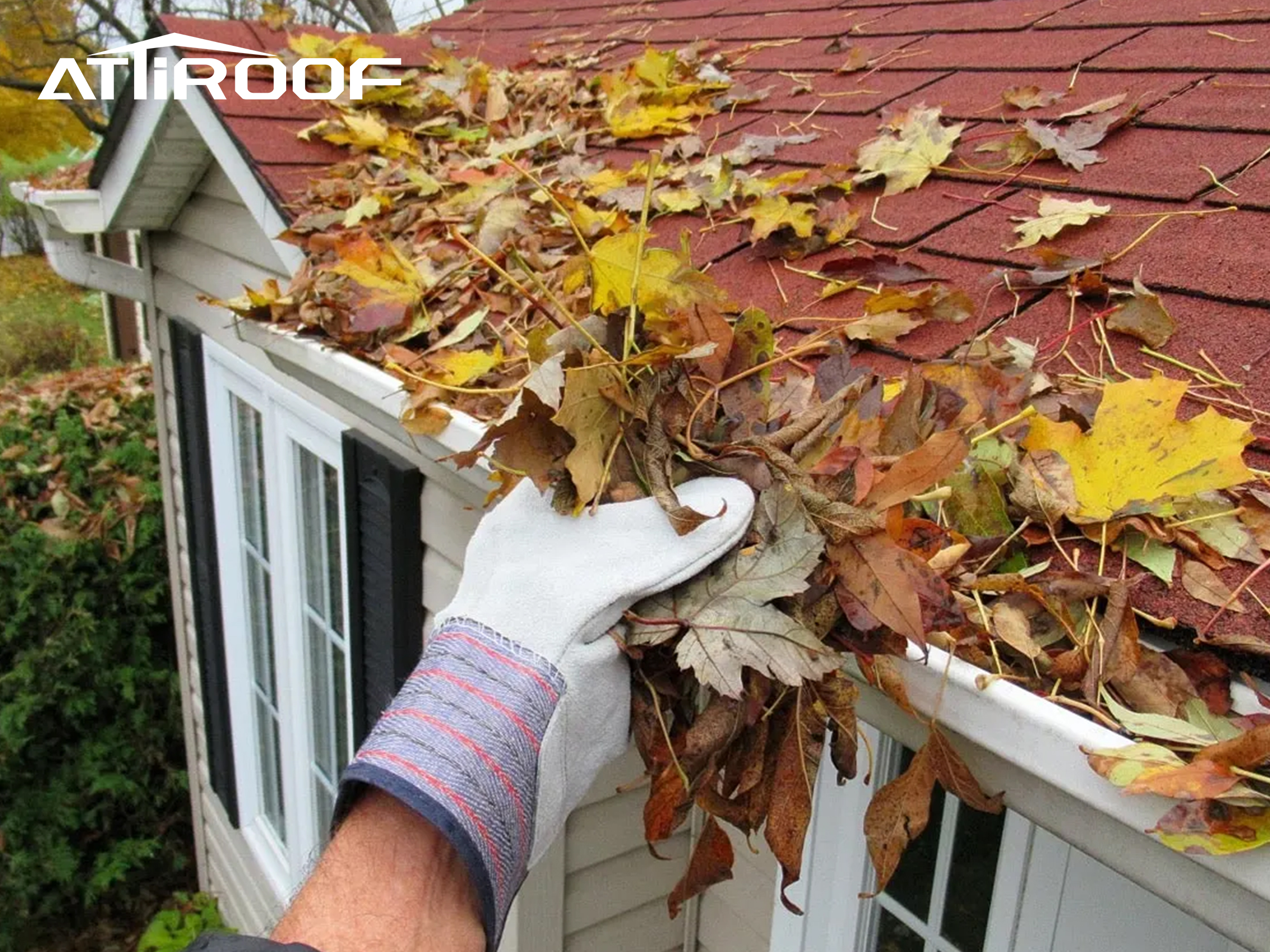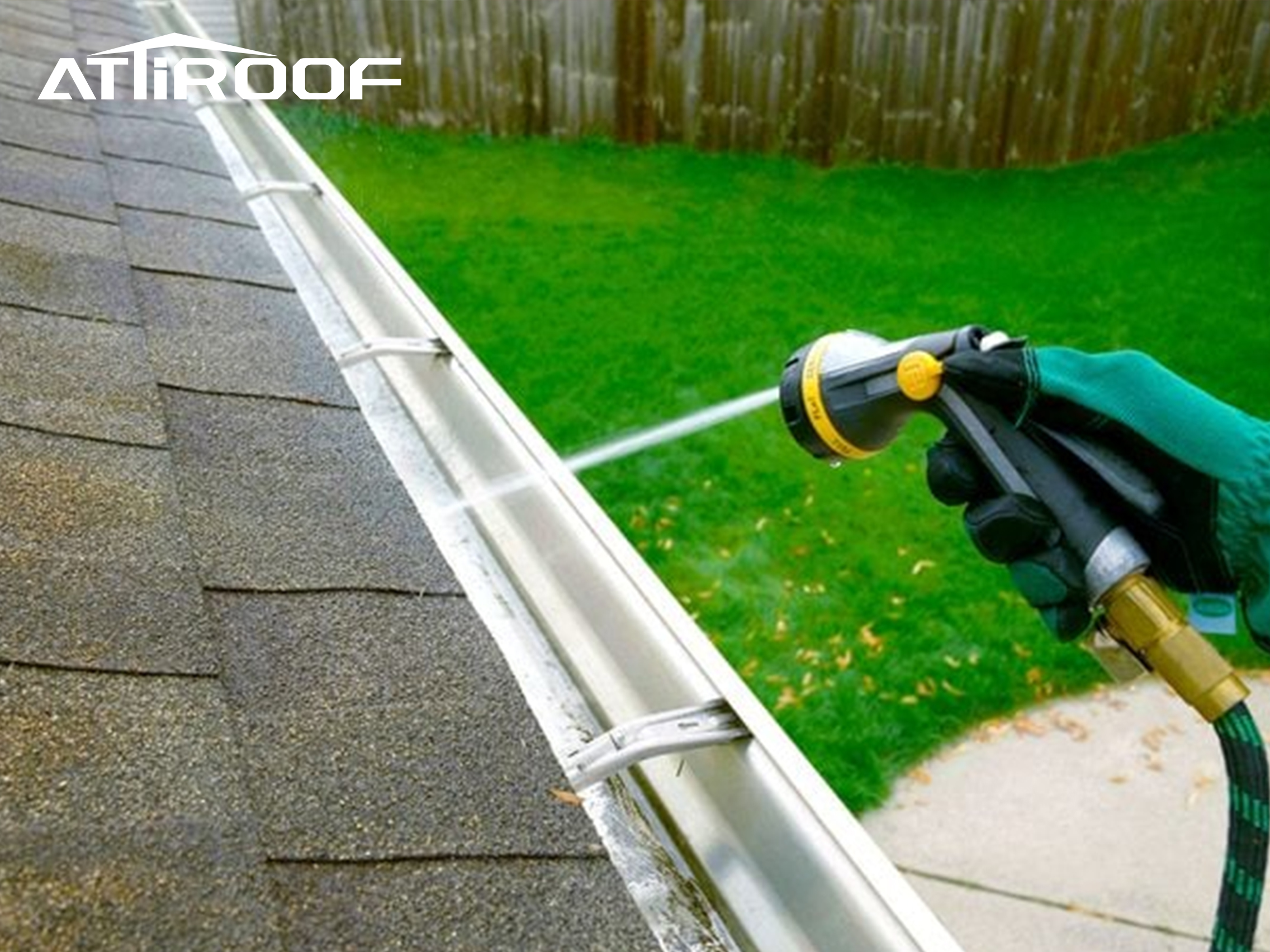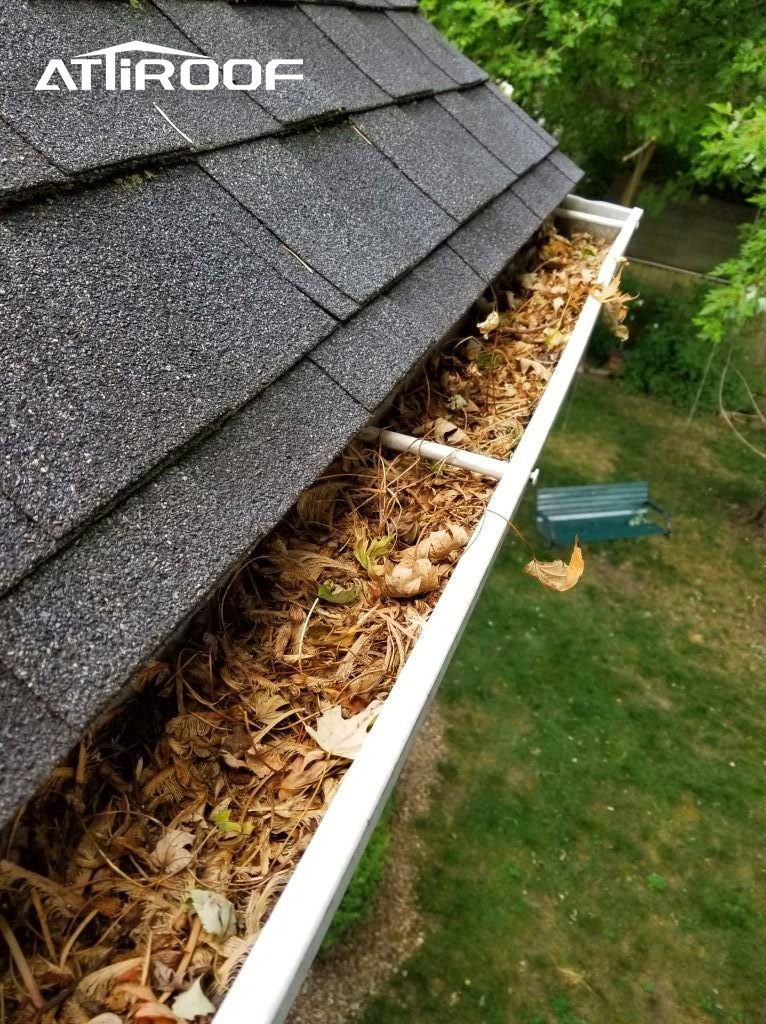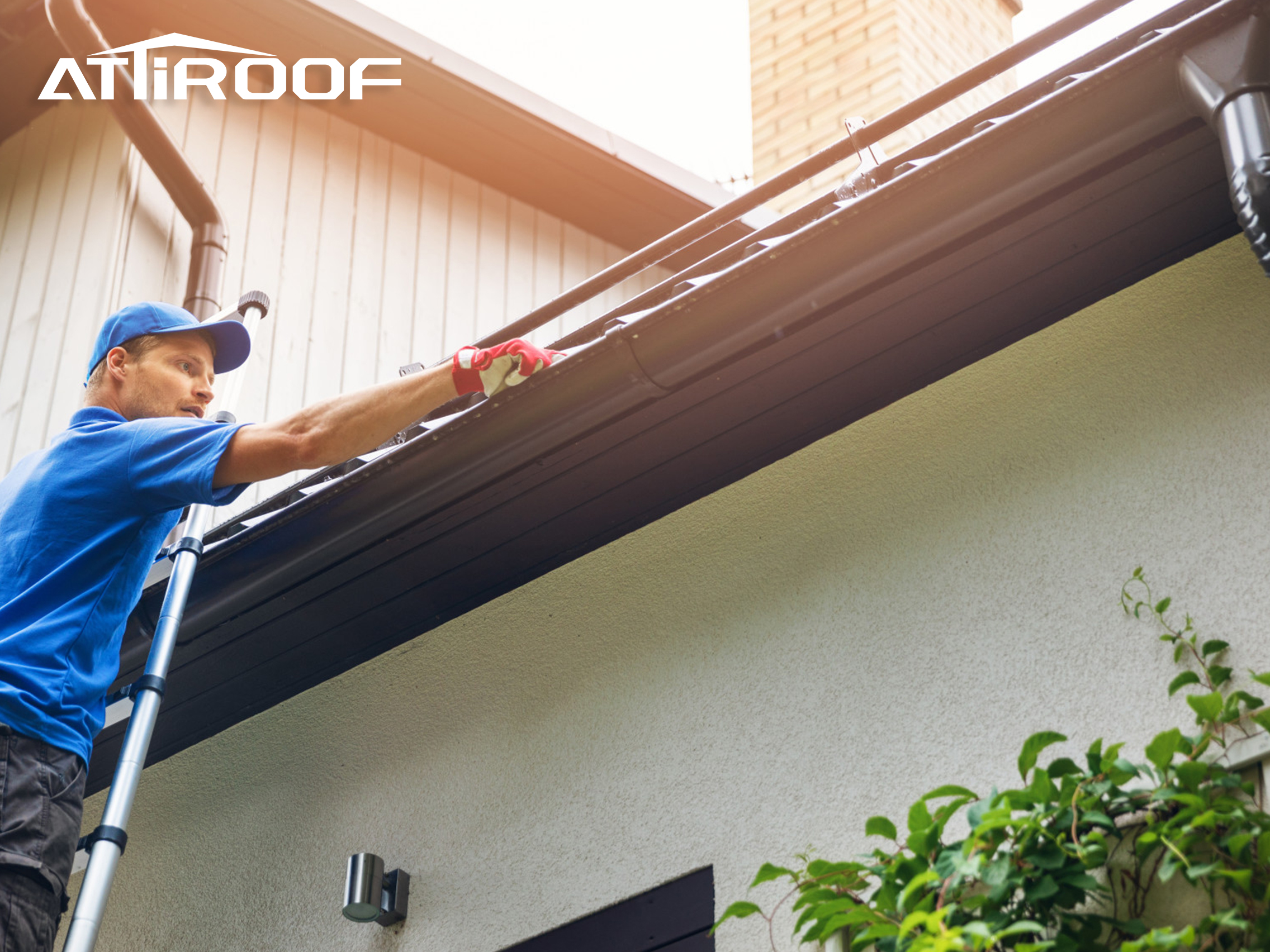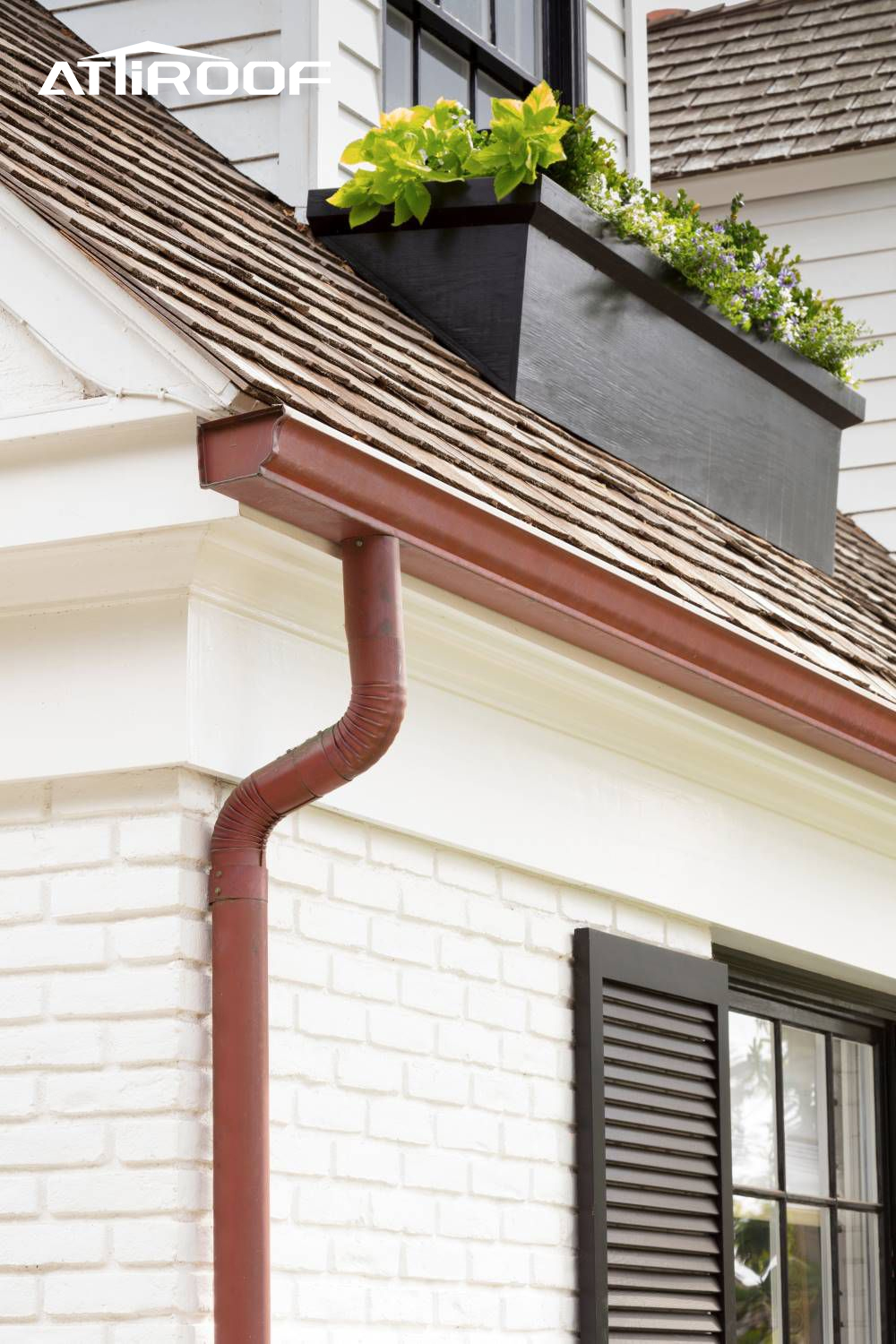Vinyl Gutters

In the diverse world of gutter systems, vinyl gutters have emerged as a popular choice for many homeowners, including those opting for roofing solutions from Attiroof. Recognized for their ease of installation and maintenance, vinyl gutters offer several benefits and considerations worth exploring.
Characteristics of Vinyl Gutters:
●Lightweight and Durable: One of the primary advantages of vinyl gutters is their lightweight yet durable nature. Made from a type of plastic known as PVC (polyvinyl chloride), these gutters are designed to resist denting and cracking.
●Corrosion and Rust Resistance: Unlike metal gutter options, vinyl gutters are inherently resistant to corrosion and rust, making them ideal for homes in various climates, especially those with high moisture levels.
●Ease of Installation: Thanks to their lightweight material and snap-together parts, vinyl gutters are particularly user-friendly when it comes to installation. This ease of installation makes them a popular choice for DIY projects.
Aesthetic Appeal and Color Options:
●Variety of Colors: Vinyl gutters come in a wide range of colors, which can be an attractive feature for homeowners looking to match or complement their home’s exterior color scheme.
●Seamless Appearance: They often come in seamless styles, providing a clean, continuous look along the roofline.
Maintenance and Longevity:
●Low Maintenance Requirements: Vinyl gutters require minimal maintenance, mainly involving regular cleaning to prevent blockages. They do not need painting or finishing.
●Longevity Considerations: While vinyl gutters are durable, they may not have the same lifespan as some metal alternatives, particularly in extreme weather conditions. UV exposure over time can also lead to the material becoming brittle.
Cost-Effectiveness:
●Affordability: One of the most appealing aspects of vinyl gutters is their cost-effectiveness. They are generally more affordable than metal gutter systems, making them an excellent choice for homeowners on a budget.
In summary, vinyl gutters are a practical and aesthetically versatile option, suitable for many homes and compatible with various roofing styles, including those offered by Attiroof. When considering vinyl gutters, it's important to weigh their ease of installation and maintenance against factors like longevity and climate suitability to ensure they align with your specific roofing needs and preferences.
Aluminum Gutters
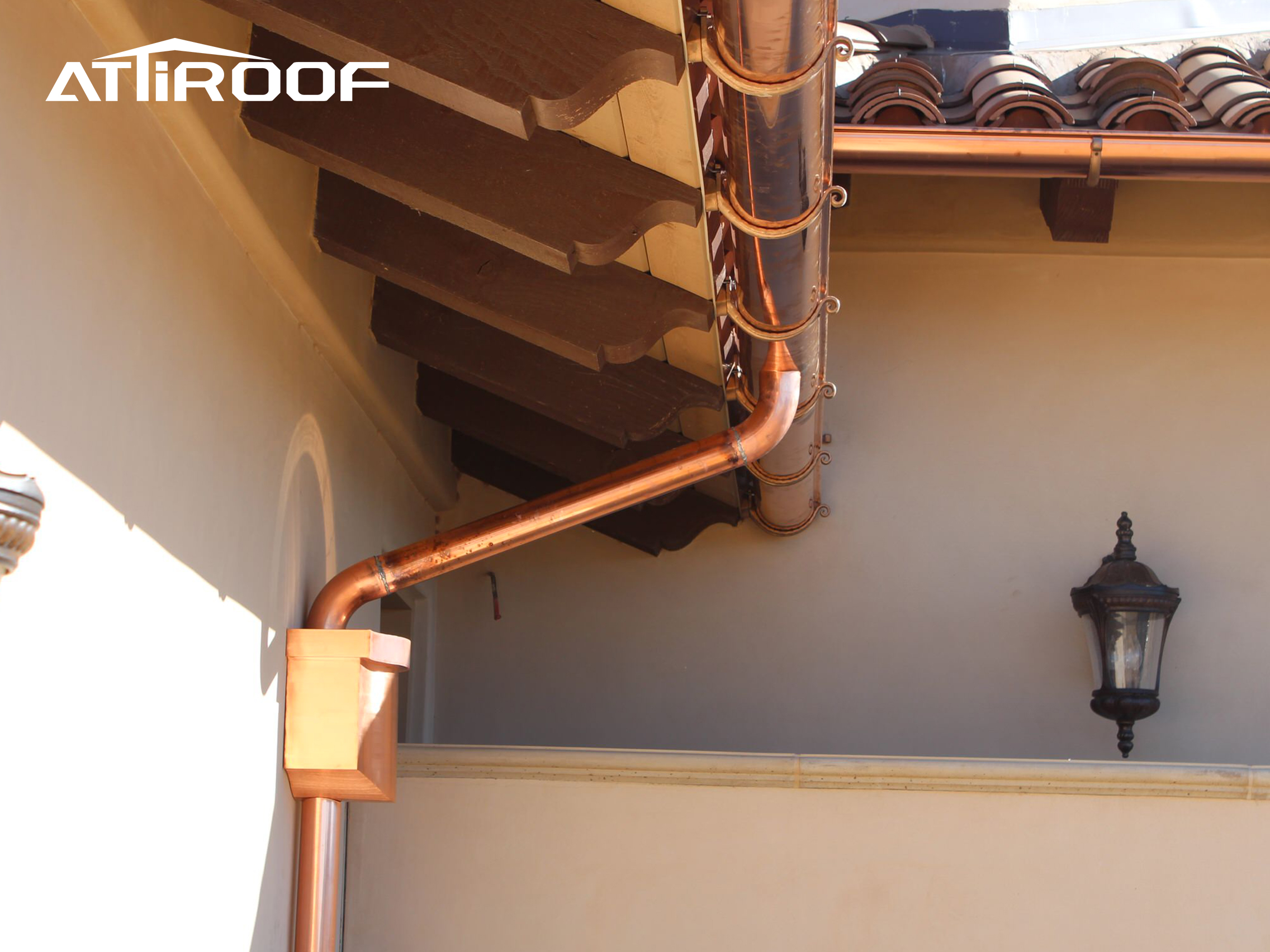
Aluminum gutters are a highly popular choice in the realm of gutter systems, and at Attiroof, we recognize their significant advantages for a wide range of roofing needs. Aluminum gutters offer a combination of durability, affordability, and versatility, making them an excellent choice for many homeowners.
Key Features of Aluminum Gutters:
●Durability: One of the most notable features of aluminum gutters is their durability. They are resistant to rust and corrosion, which makes them an ideal choice in various climates, including those with high rainfall or humidity.
●Lightweight: Aluminum is a lightweight material, which makes these gutters easier to handle and install. This property also puts less strain on the roofing and fascia to which they are attached.
●Customization and Variety: Aluminum gutters come in a variety of colors and can be painted, offering homeowners the flexibility to match their gutter system with their home's exterior. They are available in various styles, including K-style and half-round, and can be custom-fitted as seamless gutters.
Advantages of Aluminum Gutters:
●Cost-Effectiveness: Compared to other materials like copper or steel, aluminum gutters are more cost-effective, offering a balance between quality and affordability.
●Low Maintenance: These gutters require minimal maintenance. They do not rust, and their color holds up well over time, which means less frequent painting or finishing.
●Longevity: With proper installation and occasional maintenance, aluminum gutters can last for many years, making them a long-term investment for your home.
Considerations for Choosing Aluminum Gutters:
●Suitability for Various Roof Types: Aluminum gutters are compatible with a wide range of roofing materials and styles, including the various offerings from Attiroof.
●Climate Compatibility: While they are resistant to rust and corrosion, it is important to consider the local climate, as extreme weather conditions may impact their longevity.
●Installation and Professional Assistance: Although aluminum gutters can be a DIY project due to their lightweight nature, professional installation is recommended to ensure they are properly fitted and secured, especially for seamless options.
In conclusion, aluminum gutters are an excellent all-around choice for most homes. They provide a practical, durable, and aesthetically pleasing solution for effective water management in roofing systems. When paired with Attiroof’s roofing products, they contribute to a comprehensive and cohesive roofing solution, enhancing both the functionality and the curb appeal of your home.
Copper Gutters

Copper gutters are a premium choice in the gutter system market and, at Attiroof, we appreciate their unique blend of aesthetic appeal and long-lasting durability. Ideal for homeowners looking for a blend of elegance and performance, copper gutters offer distinctive advantages that set them apart in the roofing industry.
Unique Characteristics of Copper Gutters:
●Aesthetic Appeal: Copper gutters are renowned for their striking visual appeal. Over time, they develop a patina, transitioning from their original shiny metallic hue to a distinctive greenish-blue color. This natural aging process adds a touch of historic elegance and charm to any property.
●Durability and Strength: Copper is extremely durable, making it an excellent material for gutters. It withstands harsh weather conditions, is resistant to corrosion, and does not rust. This resilience translates to a longer lifespan, often outlasting the roofing materials to which they are attached.
●Low Maintenance: Copper gutters require minimal maintenance. Their resistance to rust and corrosion means they need less frequent cleaning and repair, making them a convenient option for many homeowners.
Advantages of Copper Gutters:
●Increased Home Value: Installing copper gutters can increase the value of a property due to their longevity and timeless look. They are often sought after in high-end home constructions and renovations.
●Eco-Friendly Material: Copper is a sustainable choice; it is 100% recyclable, making it an environmentally friendly option for gutter systems.
●Versatility in Design: Copper gutters fit well with a variety of architectural styles, from traditional to contemporary, enhancing the overall aesthetic of a building.
Considerations for Copper Gutters:
●Initial Investment: While copper gutters offer numerous benefits, they are more expensive upfront compared to materials like aluminum or vinyl. However, their longevity and low maintenance needs can make them cost-effective over time.
●Professional Installation Required: To ensure maximum performance and aesthetic appeal, professional installation of copper gutters is recommended. Proper installation is crucial to prevent potential issues like seam leaks or improper drainage.
In summary, copper gutters are an excellent investment for those seeking a combination of beauty, durability, and eco-friendliness. Their elegant appearance and robust performance make them a superb choice for homeowners who want to pair their Attiroof roofing solutions with a gutter system that stands out both in functionality and style. While the initial cost may be higher, the long-term benefits and distinctive appearance make copper gutters a worthwhile addition to any home.
Steel Gutters
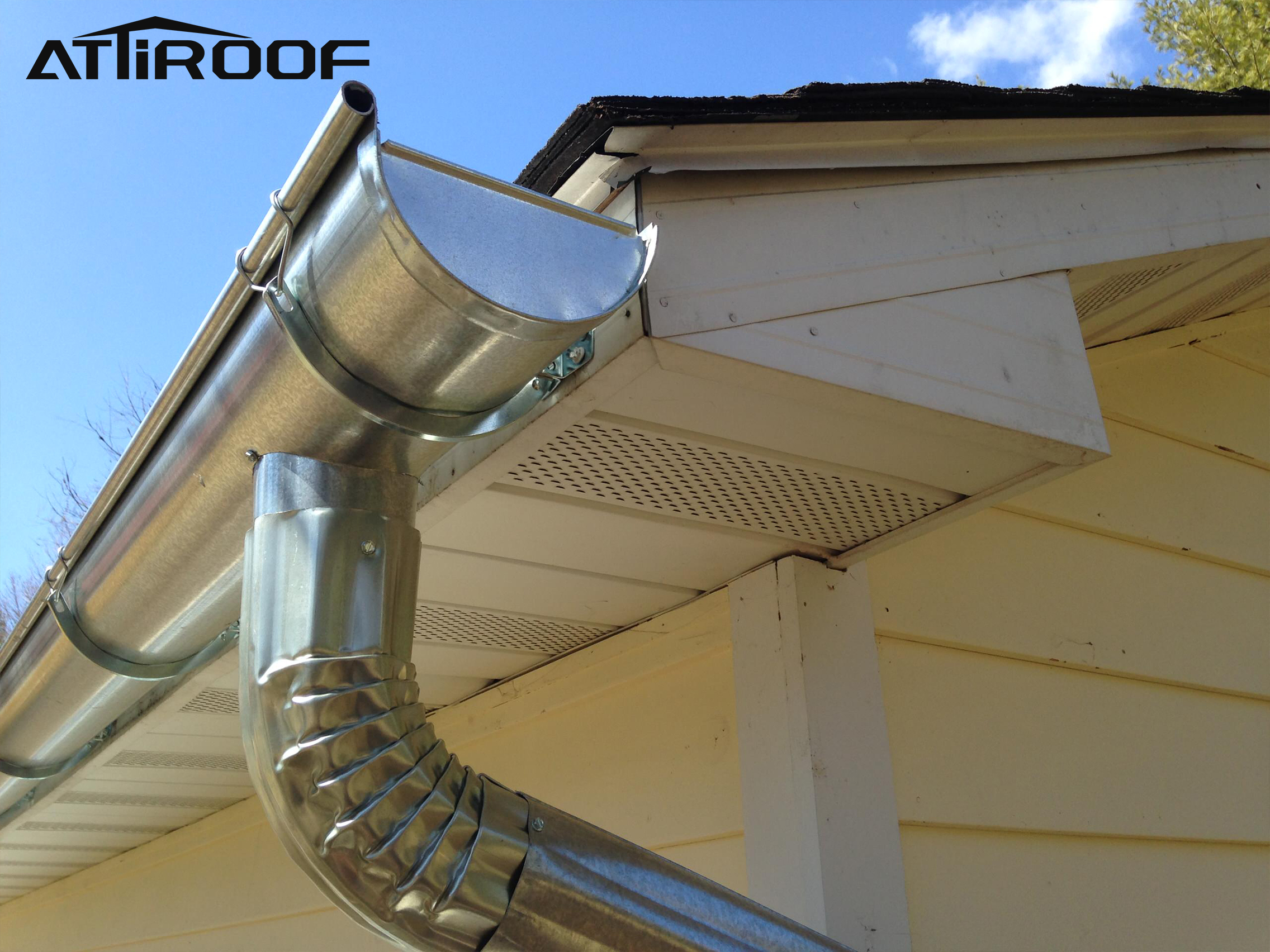
Steel gutters stand as a testament to durability and structural integrity in the realm of roofing solutions. Recognizing the essential role a robust gutter system plays in safeguarding a home's structure, Attiroof commits to offering steel gutters that merge reliability with design adaptability. These gutters are not only celebrated for their substantial strength but also for their ability to blend seamlessly with diverse architectural aesthetics, providing a solution that is as visually appealing as it is functionally steadfast.
Distinctive Features of Steel Gutters:
●Unparalleled Durability: Crafted from high-grade steel, these gutters boast an impressive lifespan, often exceeding several decades. A study by the National Association of Home Builders asserts that steel gutters can last up to 50 years, subject to proper maintenance, underscoring their durability and resilience against wear and tear.
●Rust Resistance: Innovations in material science have led to the advent of galvanized and stainless steel gutters, which are coated to fend off rust and corrosion. This protective layer ensures longevity and preserves the aesthetic allure of the gutters, even in harsh weather conditions.
●Aesthetic Flexibility: Steel gutters don't just perform well; they look great too. Available in a plethora of colors and finishes, they can be tailored to complement your home's exterior, adding a touch of sophistication to its overall curb appeal.
Advantages of Opting for Steel Gutters:
●Cost-Efficiency in the Long Run: While the initial investment might be higher than for other materials, the longevity and minimal upkeep of steel gutters make them a cost-effective choice over time. Their robustness translates to fewer replacements and repairs, ultimately saving homeowners money.
●Superior Home Protection: According to the American Society of Home Inspectors, water damage accounts for a significant percentage of home insurance claims. Steel gutters offer robust protection by efficiently channeling water away, safeguarding your home against potential water-related damages.
●Sustainable Choice: Steel is 100% recyclable, making it an environmentally conscientious option. Choosing steel gutters aligns with sustainable living practices, reducing the carbon footprint and contributing positively to environmental conservation.
Considerations for Installing Steel Gutters:
●Weight and Installation: Steel gutters are heavier, necessitating professional installation to ensure they are securely anchored. This not only guarantees optimal performance but also safeguards against potential structural issues.
●Maintenance Insights: While steel gutters are low-maintenance, regular checks are recommended. A report by the International Association of Certified Home Inspectors recommends biannual gutter cleaning and inspection to prevent clogging and ensure efficient water flow.
In essence, steel gutters represent a fusion of functionality, durability, and style, making them an exemplary choice for discerning homeowners. At Attiroof, we pride ourselves on delivering solutions that protect, endure, and enhance the aesthetic value of your home. By choosing steel gutters, you're not just installing a gutter system; you're investing in peace of mind and the long-term wellbeing of your home.
Wood Gutters
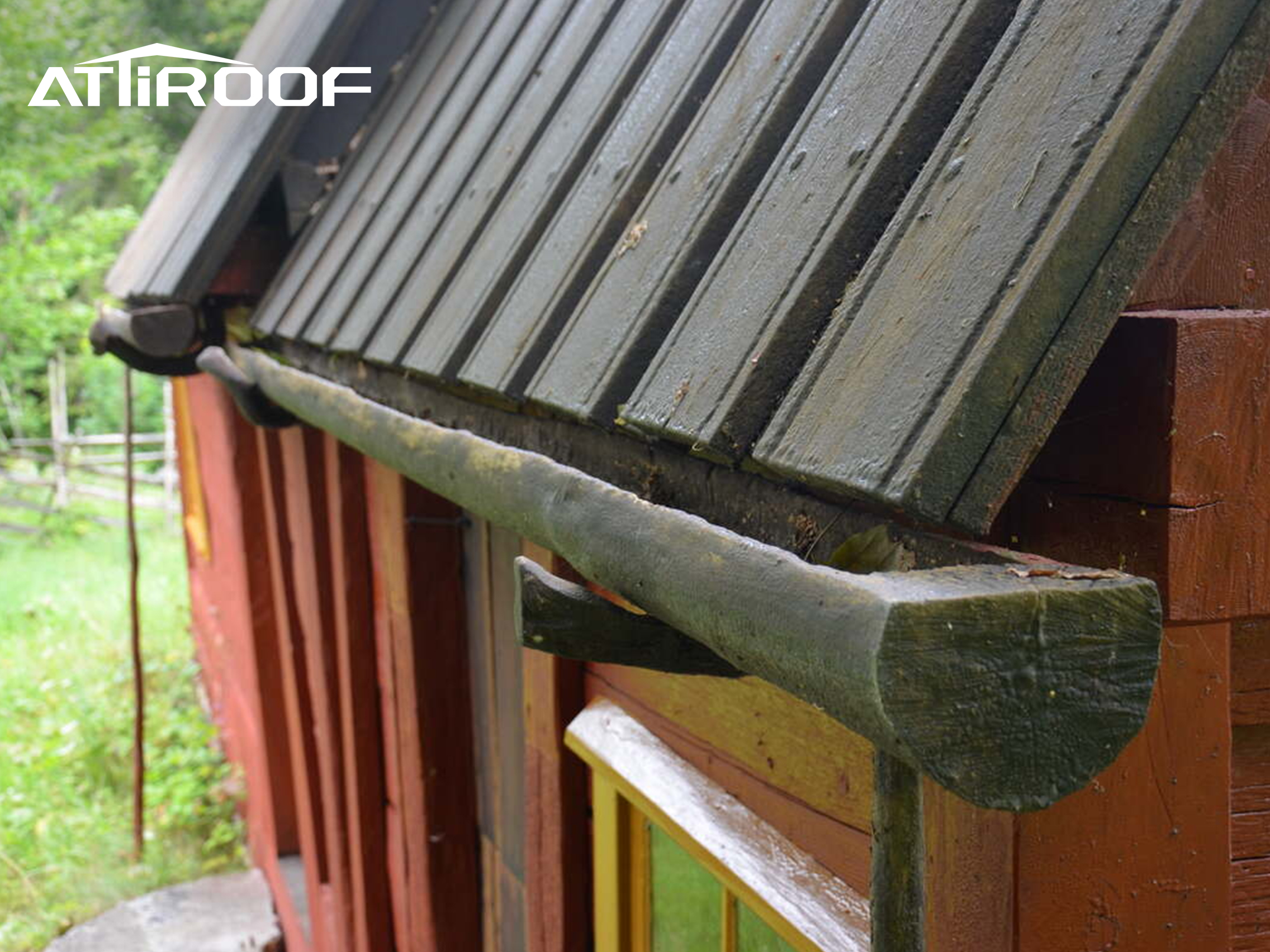
Wood gutters embody a classic and traditional aesthetic, offering a natural charm that is hard to replicate with modern materials. At Attiroof, we understand that for some homeowners, the authenticity and rustic appeal of wood gutters make them a preferred choice, especially for historic homes or structures aiming to maintain a period-specific appearance.
Distinctive Features of Wood Gutters:
●Natural Aesthetic: Wood gutters bring a timeless elegance to any property. They blend seamlessly with the natural surroundings and are particularly suited for historic or traditionally styled homes, where maintaining architectural integrity is crucial.
●Custom Craftsmanship: Each wooden gutter is a testament to skilled craftsmanship. Unlike mass-produced gutter systems, wood gutters can be tailored to specific dimensions and shapes, offering a bespoke solution that adds to the uniqueness of a property.
●Insulative Properties: Wood naturally has insulative properties, potentially contributing to a more stable temperature near the roofline and reducing the likelihood of ice dam formation in colder climates.
Advantages of Opting for Wood Gutters:
●Aesthetic Harmony: For homes with wooden architectural elements, wood gutters ensure a harmonious look, preserving the property's cohesive appearance and potentially enhancing its market value.
●Eco-Friendly Material: Wood is a renewable resource, and for those conscientious about their environmental footprint, wood gutters can be a sustainable choice, especially if sourced from responsibly managed forests.
Considerations for Installing Wood Gutters:
●Regular Maintenance Required: Wood gutters demand diligent maintenance. They need to be cleaned, treated, and inspected regularly to prevent rot, mold, or water damage. Proper maintenance can significantly extend the lifespan of wood gutters but requires a commitment from the homeowner.
●Susceptibility to Elements: Although wood can be treated to resist water and pests, it is inherently more susceptible to the elements than metal or synthetic options. This susceptibility means that without regular upkeep, wood gutters can deteriorate more quickly.
●Professional Installation Recommended: Installing wood gutters is a skill-intensive task that often requires professional expertise. Proper installation is crucial to ensure that the gutters are not only aesthetically pleasing but also functionally effective.
In conclusion, wood gutters are an excellent choice for those who appreciate the natural beauty and traditional elegance they bring to a property. Ideal for homeowners who prioritize authenticity and are committed to the care and preservation of their home's unique character, these gutters offer an unmatched aesthetic. While they do require a more involved maintenance regimen compared to metal or synthetic alternatives, the distinct appeal and customized craftsmanship of wood gutters make them a compelling option for those looking to maintain or enhance the classic appearance of their home.
Factors to Consider When Selecting a Gutter System
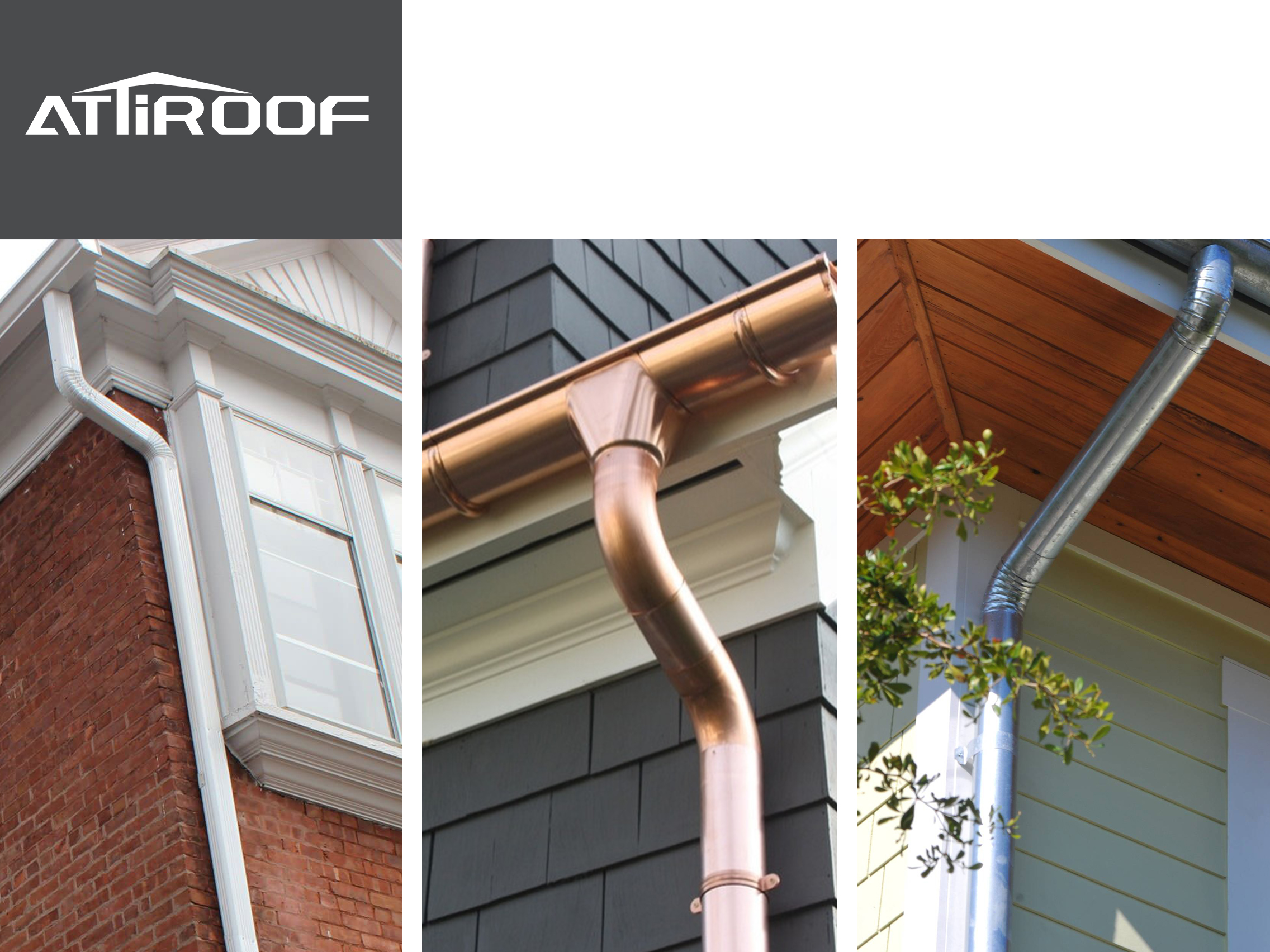
Having explored the diverse types of gutter systems, you might now have a clearer picture of the options available and perhaps even a preference in mind. However, before making a final decision, it's crucial to consider a range of key factors that will ensure your chosen gutter system not only meets your aesthetic desires but also performs optimally under your specific circumstances. At Attiroof, we're committed to guiding you through this decision-making process. Here's a breakdown of essential aspects to deliberate when selecting the ideal gutter system for your home:
1. Climate and Weather Conditions:
Your local climate plays a pivotal role in determining the most suitable type of gutter for your home. In areas prone to heavy rainfall, a robust system like seamless or K-style gutters, known for their capacity to handle large volumes of water, might be the ideal choice. Conversely, if you reside in a region with frequent snowfall, it's essential to opt for a gutter system that can bear the weight of snow and ice, such as half-round or steel gutters, which are known for their strength and structural integrity.
2. Material Durability and Maintenance:
Different materials offer varying levels of durability and maintenance needs. For instance, while vinyl gutters are low-maintenance and rust-resistant, they may not be as durable as metal options like steel or copper in extreme weather conditions. Consider how much time and effort you are willing to invest in maintenance when choosing the material.
3. Aesthetic Appeal:
Gutters not only serve a functional purpose but also contribute to the overall look of your home. The style and color of the gutters should complement your home's exterior. Materials like copper and wood offer distinctive looks but come with different maintenance and cost implications.
4. Budget and Cost-effectiveness:
It's vital to balance the initial cost with long-term value. While options like vinyl are budget-friendly upfront, they may incur higher maintenance costs over time. In contrast, premium materials like copper, though pricier initially, are noted for their longevity and can enhance property value, often making them more cost-effective in the long run. According to industry data, well-maintained copper gutters can last over 50 years, significantly reducing the need for replacements.
5. Environmental Considerations:
If sustainability is important to you, consider the environmental impact of the gutter material. Materials like aluminum and steel are often made from recycled content and are fully recyclable at the end of their life.
6. Professional Installation and Warranty:
Proper installation is crucial for the optimal performance of your gutter system. Incorrectly installed gutters can lead to issues like water damage or foundation problems. Choose a reputable company that offers professional installation services and a solid warranty on their products.
7. Water Collection and Recycling:
If you're considering rainwater harvesting, opting for gutter systems like seamless or half-round gutters can be beneficial, as their efficient design minimizes leaks and ensures maximum water capture. Pairing these gutters with rain barrels or cisterns not only contributes to water conservation but can also lead to significant savings on your water bills. These gutter types are known for their smooth contours, which facilitate optimal water flow and reduce debris accumulation, making them ideal for collecting and repurposing rainwater.

By carefully considering these factors, you can choose a gutter system that not only protects your home from water damage but also aligns with your aesthetic preferences, budget, and environmental values. Remember, a well-chosen gutter system is an investment in your home's health and longevity.




